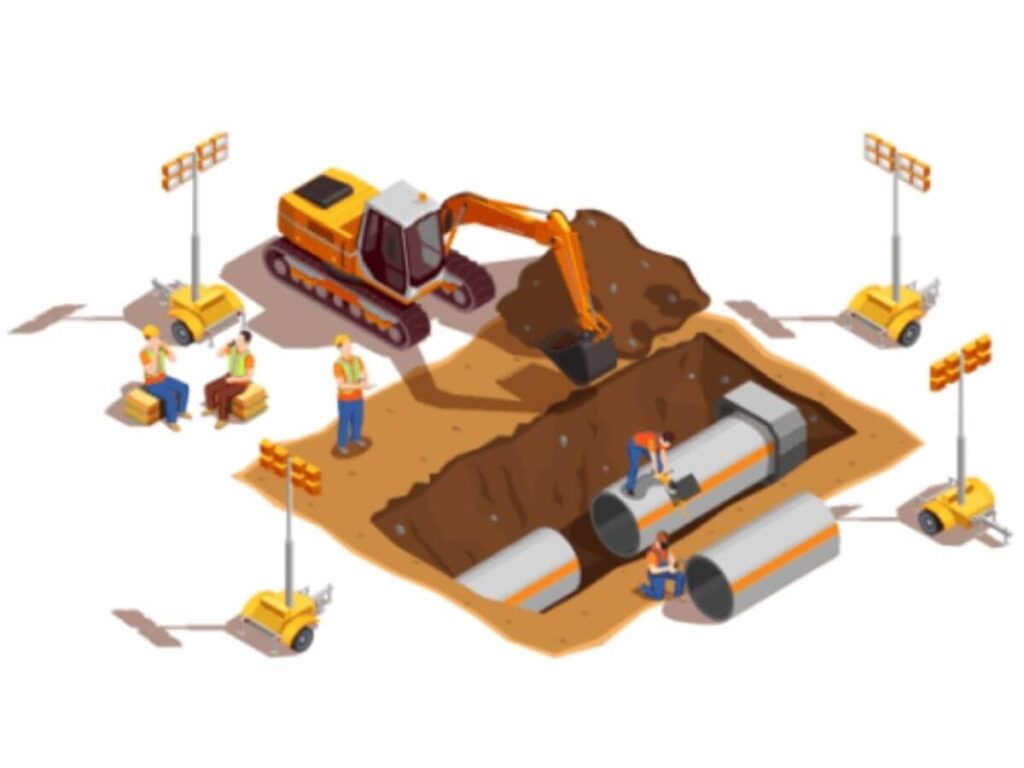Years ago, a buddy of mine started making utility trailers in his garage. No staff, no big budget. Just steel, grit, and some weekend time. Today he runs a six-person shop and ships statewide.
That kind of growth is possible if you treat it like a business from day one.
I’ve seen trailer businesses fail from poor planning, and others grow fast with the right systems. This article reflects the lessons I’ve picked up helping others build from scratch.
Inside, you’ll get a step-by-step breakdown on how to manufacture trailers. From market research and setting up shop to pricing and selling. If you want real info, not fluff, you’re in the right place.
Let’s get started!
1. Sketching Out the Business Model
When I first thought about trailer manufacturing as a business, I didn’t start by welding or pricing out axles. I started with a notebook, sketching out what this business would even look like.
That part right there is often skipped. But if you’re serious about becoming a trailer manufacturer, the business model is where everything begins.
Start by answering these key questions:
- What Kind of Trailers Will You Manufacture? Flatbeds, utility trailers, enclosed, dump, or gooseneck each have their own customer base and production requirements. Picking a focus helps you build processes and product lines around a specific need.
- Who Are Your Buyers? Are you targeting construction crews, farmers, or independent contractors? Knowing your ideal customer will shape design decisions and sales strategy.
- How Will You Sell? You can sell directly to buyers, partner with dealers, or take on special orders. Each model affects your pricing, workload, and margins differently.
- What’s Your Pricing Strategy? Competing on cost, customization, or quality will set the tone for your operations. This decision will guide how lean or high-end your setup should be.

2. Figuring Out Facility and Equipment Needs
I’ve walked into trailer shops that were barely more than converted garages, and I’ve toured full-size manufacturing facilities with CNC plasma cutters and overhead cranes. You don’t need to start with everything, but you do need the right setup for your goals.
Start by defining your production target. How many trailers will you build weekly or monthly? That number helps you plan space, flow, and equipment from the beginning.
Here are some basics most manufacturers start with:
- Covered Workspace: You’ll need at least one bay for welding and one for assembly. Clean concrete floors and proper ventilation go a long way in keeping work safe and efficient.
- Welding and Fabrication Equipment: MIG welders, chop saws, grinders, and clamps are your day-one gear. As demand grows, adding tools like tube benders or CNC machines will improve speed and consistency.
- Painting or Coating Area: Start with manual painting or brushing in a well-ventilated area. If you’re planning higher volume, look into powder coating setups or outsourcing.
- Lifting and Transport Gear: Carts, hoists, and forklifts help move heavy frames and reduce the chance of injury. They also speed up transitions between each stage of the build.
- Office and Admin Space: Even a small corner with a computer and phone helps you quote jobs, order parts, and stay organized. As your business grows, this area will likely expand.

3. Thinking Through Material Sourcing
In trailer manufacturing, your builds are only as good as the materials going into them. One weak link, whether it’s cheap steel or mismatched tires, can create big problems later.
Always plan your sourcing with backups in mind. Relying on one supplier for every item is risky.
Here are the most common materials and components you’ll need:
- Steel and aluminum: You’ll need steel or aluminum tubing and sheet for frames, sides, and supports. Buy from reputable yards with consistent quality and reliable availability.
- Axles and suspension: Torsion and leaf spring axles come in different weight classes and specs. Match the axle rating to your trailer type to avoid failures and liability.
- Wheels and tires: Trailer tires are built for heavier vertical loads and need to meet highway regulations. Buying in bulk can lower costs, but check date codes to avoid old stock.
- Lights, wiring, and connectors: Road-legal trailers require functioning lights, reflective markers, and sealed wiring. Consider LED systems for longer life and fewer maintenance calls.
- Couplers, jacks, and safety chains: These connect your trailer to the tow vehicle and help protect everyone on the road. Always choose parts rated for your trailer’s total capacity.
Build relationships with both local suppliers and national distributors. That way, you have options if prices spike or stock runs low.

4. Considering Who You’d Need on the Team
You can start with a small crew, but having the right roles in place makes a big difference. Even with low production volume, one weak hire can slow everything down.
Think about who you need now and who you’ll want in six months.
Start with the core roles:
- Fabricator or welder; A skilled welder with experience in structural work is essential. Look for someone who understands reading plans and maintaining consistent joints.
- Production lead or foreman; This person oversees scheduling, workflow, and final inspections. They help keep the team focused and the shop floor running smoothly.
- Design and CAD support; A digital designer helps you produce repeatable plans and clear specs. This role is especially helpful for custom trailer builds or scaling production.
- Admin and sales; Answering emails, preparing quotes, and managing invoices can take up a lot of your time. Having someone handle the paperwork keeps builds moving.
As you grow, consider adding:
- Assembly helpers: These crew members handle wiring, lights, finishing touches, and inspections. Training them properly frees up your welders for the heavy work.
- Inventory and procurement; Keeping track of parts, reordering on time, and receiving shipments is a full-time task. Without this role, you risk running out of key components mid-build.
- Quality inspector: A final set of eyes can catch small mistakes before they become big issues. This also helps build a strong reputation and reduces rework.

5. Planning the Design and Build Process
There’s a big difference between someone who builds trailers and someone who runs a trailer business. The difference comes down to process.
I’ve seen operations go from chaos to smooth flow just by creating a build checklist and sticking to it. A consistent process makes training easier and lets you spot delays before they cause problems.
Build a process like this:
- CAD Design and Spec Sheet: Every trailer starts with a digital plan that shows dimensions, load ratings, and features. Templates help you tweak designs without starting over every time.
- Material Prep: Cut your steel to size, stage axles and parts, and prep the small components first. Keeping this step organized sets the pace for the rest of the build.
- Frame Weld-Up: Use jigs to square frames and hold parts in place. Consistent weld sequence avoids warping and saves rework time.
- Axle Install and Mechanicals; Mount axles, brakes, suspension, and couplers with proper tools and torque specs. Keep alignment tight and connections clean.
- Lights and Wiring; Route wires through protected channels and avoid exposed areas. Use zip ties, clips, or conduit to reduce vibration damage.
- Finishing; Paint, coat, or galvanize depending on customer needs and climate. Once dry, add decals, tags, and reflectors.
- Final Inspection: Double-check lights, bolts, brakes, wiring, and VIN tags. Snap a few photos and store paperwork for your records.

6. Looking Into Legal and Compliance Requirements
This is the part a lot of people skip, and regret later. I’ve heard stories of trailers getting rejected for registration or entire shipments getting held up because the builder missed one legal step.
If you’re manufacturing trailers for sale, you’re taking on responsibility the moment that unit hits the road. Getting your paperwork right from day one makes the rest of your business a whole lot smoother.
Here are the basics to get in order:
- Business Registration; Register your company based on your local business structure options, LLC, partnership, or corporation. This protects your personal assets and opens the door to contracts, bank accounts, and insurance.
- Manufacturer ID and VINs; In the U.S., you’ll need to apply for a Manufacturer ID with NHTSA before issuing VINs. It’s a one-time process, but it can take several weeks to complete.
- Liability Insurance: Once your trailers hit public roads, you’re open to legal risk. A commercial policy helps protect your business in case of accidents or product failure.
- Build Compliance: Your trailers need to meet local rules on width, length, lighting, weight capacity, and braking systems. These standards vary by state or country, so it’s worth reviewing them carefully.
- Safety Standards: Use DOT-approved lights, reflectors, and safety chains. Missing just one item can lead to a failed inspection or customer complaint.

7. Brainstorming Branding and Marketing
Being a solid fabricator doesn’t automatically make your phone ring. One of the biggest surprises for many trailer builders is how much time they need to spend on branding and marketing.
Getting seen takes work, but it pays off. Once your name starts spreading, orders come in faster and you spend less time chasing jobs.
Start with your brand basics:
- Business Name and Logo: Choose something easy to spell, easy to say, and clear about what you do. Avoid overly clever names that confuse people or sound like a tech startup.
- Website and Online Presence: Even a one-page website with photos, pricing, and contact info builds trust. Use your site as a place to show past builds and answer common questions.
- Google Maps and Online Listings: Set up your Google Business Profile and add photos regularly. Being listed in maps helps locals find your shop without you spending on ads.
- Printed Materials: Keep business cards, flyers, and brochures on hand for walk-ins or trade events. Include your trailer specs, contact info, and clear pricing tiers.
Then think about your message. Are you focused on affordability, heavy-duty builds, fast turnarounds, or custom work? Pick a lane and reinforce it in everything from your logo to your Facebook posts.
And yes, word of mouth is still gold. But word spreads faster when people can find you online after they hear your name.
8. Mapping Out Sales and After-Sales Logistics
Building trailers is half the battle. The other half is selling them, and making sure the customer experience is good enough that they come back or send others your way.
I’ve seen builders struggle not because their trailers were bad, but because they didn’t think through how the sale would happen. You need a simple, repeatable process from quote to delivery.
Important sales elements to lock in:
- Quoting Process: Create a form or spreadsheet that helps you generate quick and accurate quotes. Include lead time, payment schedule, and what’s included in the build.
- Deposit and Payment Structure; A 50/50 or 30/70 payment split is common in the trailer business. This gives you funds to cover materials and keeps both sides committed.
- Delivery or Pickup Options: Will customers pick up trailers at your shop, or will you offer transport? Offering delivery can give you an edge, especially for rural or busy customers.
After the sale, keep the relationship alive. That’s where a lot of repeat business and referrals come from.
- Warranty Terms: Offer a basic warranty on workmanship or major parts for a fixed period. Keep it simple, clear, and printed with each sale.
- Customer Follow-Ups: A check-in after 30 days builds trust and helps you catch any small issues early. It also opens the door to testimonials or photos of your trailer in use.
- Maintenance Support: Offer a printed or digital guide with tips on greasing hubs, checking tires, and storing trailers. This small gesture can reduce problems down the line and show you care about the long haul.

Conclusion
Remember the guy I told you about who started in his garage? He didn’t have it all figured out. But he took the first step.
This article gave you the what, how, and why of trailer manufacturing. From sketching ideas to selling your first unit, every section was built for people like you, ready to move.
Start where you are. Use what you have. Build as you go.
Contact us today for expert trailer solutions that support your vision from day one.


